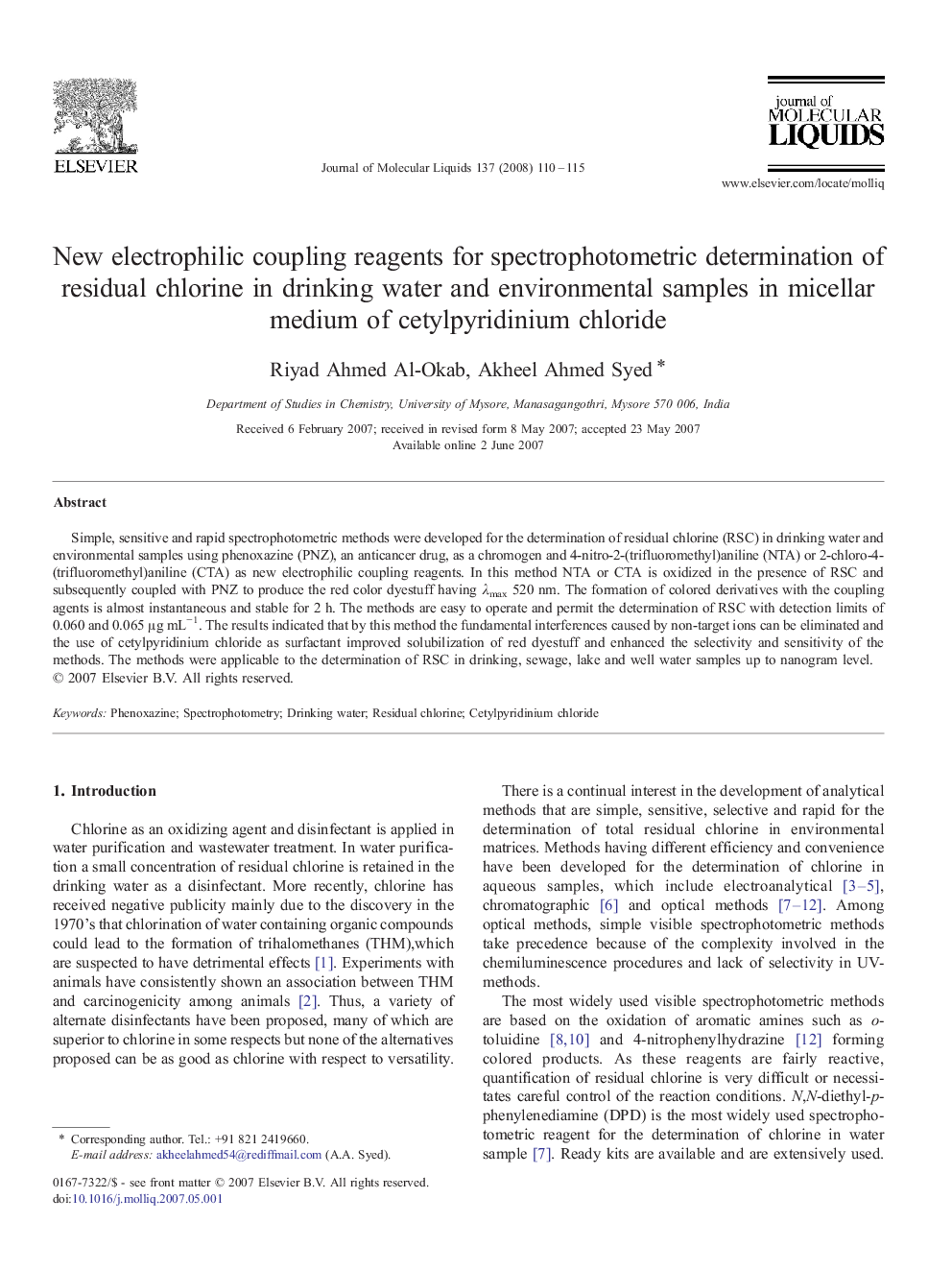| Article ID | Journal | Published Year | Pages | File Type |
|---|---|---|---|---|
| 5413580 | Journal of Molecular Liquids | 2008 | 6 Pages |
Abstract
Simple, sensitive and rapid spectrophotometric methods were developed for the determination of residual chlorine (RSC) in drinking water and environmental samples using phenoxazine (PNZ), an anticancer drug, as a chromogen and 4-nitro-2-(trifluoromethyl)aniline (NTA) or 2-chloro-4-(trifluoromethyl)aniline (CTA) as new electrophilic coupling reagents. In this method NTA or CTA is oxidized in the presence of RSC and subsequently coupled with PNZ to produce the red color dyestuff having λmax 520 nm. The formation of colored derivatives with the coupling agents is almost instantaneous and stable for 2 h. The methods are easy to operate and permit the determination of RSC with detection limits of 0.060 and 0.065 μg mLâ1. The results indicated that by this method the fundamental interferences caused by non-target ions can be eliminated and the use of cetylpyridinium chloride as surfactant improved solubilization of red dyestuff and enhanced the selectivity and sensitivity of the methods. The methods were applicable to the determination of RSC in drinking, sewage, lake and well water samples up to nanogram level.
Related Topics
Physical Sciences and Engineering
Chemistry
Physical and Theoretical Chemistry
Authors
Riyad Ahmed Al-Okab, Akheel Ahmed Syed,
